The High End Novum PMR Premium Resonator
|
The High End Novum PMR Premium Resonator |
|
A “Ring” of Truth |
|
|
|
January, 2012 |
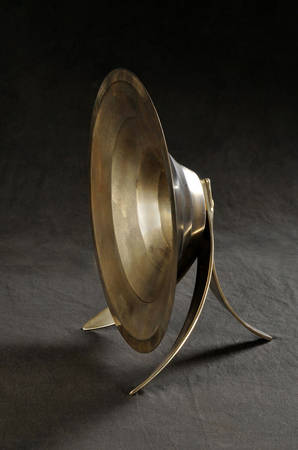
 I first discovered and reviewed Franck Tchang’s Acoustic Resonators in the winter of 2004. Their effectiveness has been proven in my listening room and numerous other stereo systems. Tchang always reminds me of how brave I was to be the first reviewer in the U.S.A. to report on these very unusual devices. And, of course, the success of Acoustic Resonators has spawned similar products. I have had the opportunity to listen to several of these, including the Synergistic Acoustic Art System (ARTs) and, recently, Ziplex Resonance devices. I appreciate the sonic improvements the more affordable Ziplex resonators provide, and I agree wholeheartedly with Norm Luttbeg’s experience (here). Unfortunately, my time with the ART system proved somewhat unfavorable, and I could never rid my room of a slight coloration, no matter where I placed the devices. Strange. Nonetheless, my experience with these devices only increased my respect for Franck Tchang.
I first discovered and reviewed Franck Tchang’s Acoustic Resonators in the winter of 2004. Their effectiveness has been proven in my listening room and numerous other stereo systems. Tchang always reminds me of how brave I was to be the first reviewer in the U.S.A. to report on these very unusual devices. And, of course, the success of Acoustic Resonators has spawned similar products. I have had the opportunity to listen to several of these, including the Synergistic Acoustic Art System (ARTs) and, recently, Ziplex Resonance devices. I appreciate the sonic improvements the more affordable Ziplex resonators provide, and I agree wholeheartedly with Norm Luttbeg’s experience (here). Unfortunately, my time with the ART system proved somewhat unfavorable, and I could never rid my room of a slight coloration, no matter where I placed the devices. Strange. Nonetheless, my experience with these devices only increased my respect for Franck Tchang.
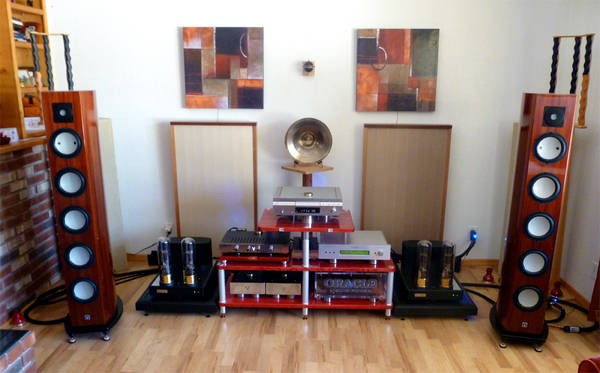
Alfred Kainz of Highend Electronics is a native of Germany who lives in Apple Valley, California, and imports some very interesting products. After a few years of seeing and hearing his excellent-sounding wares at various audio shows, I came to discover Kainz’s predilection for tweaks (the above is a photo of his system). And perhaps his greatest tweak so far is High End Novum’s Passive Multi-vocal Resonator (PMR). When I questioned Kainz about the PMR and how it might differ from the Acoustic System Resonators, his response was, “I have the Acoustic System and they work on the same principle but differently…Michael Junblut [the designer] has worked on the PMR for many years and formally started High End Novum when the PMR was a finished product. Junblut also invented the first series of high-end fuses and circuit breakers. These were imported by PS Audio under the name Critical Link some years ago, and he has since handed over control of his company, Audiophile Hifi Produckte, to his son Andreas Junblut. In the past three years, Michael Junblut has devoted himself completely to the development of the PMR resonators.” By the end of our conversation, Kainz promised to send me a PMR for evaluation.
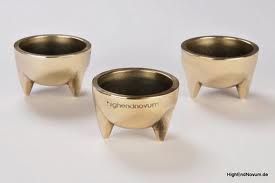 There presently are two different types of PMRs available: a standard table-top version (that comes without feet) and the PMR premium, which is said to be slightly larger, thicker, and comes with a feet assembly – and is the very subject of this review. In addition, High End Novum makes resonator bowls (above) that are designed to be used as feet under any component (maybe not a large speaker) or like the PMR, can be placed anywhere in your listening room [Kainz sent me two sets of Bowls and although I do think they detect something on the positive side, I have not spent enough time to conclude they do as prescribed. Therefore, I do not include them in this review.]
There presently are two different types of PMRs available: a standard table-top version (that comes without feet) and the PMR premium, which is said to be slightly larger, thicker, and comes with a feet assembly – and is the very subject of this review. In addition, High End Novum makes resonator bowls (above) that are designed to be used as feet under any component (maybe not a large speaker) or like the PMR, can be placed anywhere in your listening room [Kainz sent me two sets of Bowls and although I do think they detect something on the positive side, I have not spent enough time to conclude they do as prescribed. Therefore, I do not include them in this review.]
Of the few email correspondences I managed with Michael Junblut (whose English is very limited, but much better than my German), he mentioned that the bronze used in the PMR “… is the only oscillating material in the world which is able to resonate and complement key tones, intermediate tones as well as overtones. As already mentioned, all of our products are specially handmade.” What surprised me was Junblut’s assertion that “Our singing bowl (PMR) has been calculated and planned by an acoustics scientist and an instrument maker. In addition, the drawing was tested and refined in detail by Dutch scientists with the Finite Element Method (FEM: an extremely precise method to calculate instruments, please consult the internet for further information.) The Finite Element Method used to refine our products is a procedure which complements the knowledge of instrument makers who had been forced to develop new products by a trial-and-error method for millennia. This is why the production of the PMR is based on scientific results combining the FEM with the experiences of instrument makers. We use this scientific method to develop even more cast-bronze products which are necessary to improve acoustic patterns.”
Upon the PMR’s arrival by FedEx some days later, I immediately noticed the wood crate was much heavier than I anticipated. I looked at the photos, making me suspect something else was in the crate besides the PMR. Jungblut’s years of R&D fashioned a resonator that is not lightweight at nearly 14 lbs., or cheaply made. Measuring nearly 13″ in diameter and sporting an old medieval Bronze look, a soft pluck alongside its very sharp — and potentially dangerous edges — produces a ring tone that is both rich and vibrant. Yet within five seconds, the ring subsides into nothingness.
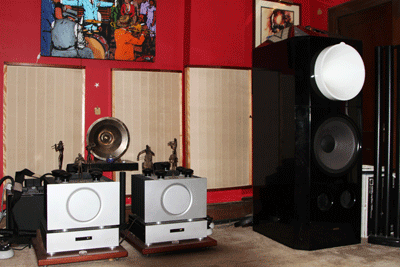
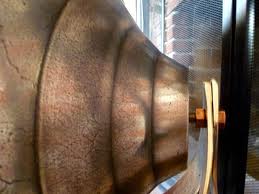 Putting the PMR together took all of five minutes. Fastening the feet is really all that is required. Set up on my front listening wall between the huge Sunny Majestic horn loudspeakers and directly behind (and between) two Behold BPA 768 amplifiers. Approximately three feet off the floor and resting atop a Rosinate isolation board (the same folks who make the Argent Room Lens), the PMR is said to be most effective on a hard surface. The PMR is large and intrusive, unlike the resonators from Tchang and Ziplex, which adorn my listening walls. The neat thing about the PMR is that it looks more like a piece of art than an audiophile device. No one has asked, ” Oh, what type of tweak is that?”
Putting the PMR together took all of five minutes. Fastening the feet is really all that is required. Set up on my front listening wall between the huge Sunny Majestic horn loudspeakers and directly behind (and between) two Behold BPA 768 amplifiers. Approximately three feet off the floor and resting atop a Rosinate isolation board (the same folks who make the Argent Room Lens), the PMR is said to be most effective on a hard surface. The PMR is large and intrusive, unlike the resonators from Tchang and Ziplex, which adorn my listening walls. The neat thing about the PMR is that it looks more like a piece of art than an audiophile device. No one has asked, ” Oh, what type of tweak is that?”
The Intensity of Musical Density
What the PMR does was evident within seconds of hitting the play button on the Nova Physics Memory Player. The music possessed a more authentic quality in terms of touch, tone, and timbre, and as a result, sounded less electronic and thus less fatiguing. Image density also seemed to gain some weight, giving instruments more decay and “hang time” — the very ingredients that can fool one into believing real instruments are in the room. Harmonic integrity and truth of timbre were phrases that kept coming to mind. I never got the sense that the tempo, pitch, or bass was slowed or altered. In fact, I felt the musical energy or PRaT (Pace, Rhythm, and Timing) actually improved considerably. Everything had a “live” feeling that is hard to explain without hearing it for oneself. Based on this experience, I can only guess at the magnitude of harm untreated rooms inflict upon the intricate and delicate overtones of the music.

Recently, I’ve been rejoicing in the styles and influences of my favorite jazz trumpeters, like Dizzy Gillespie, Miles Davis, Kenny Dorham, and Freddie Hubbard. Often, I think about how their musical styles might have impacted today’s up-and-coming “young lions.” Today, names like Jeremy Pelt, Ambrose Akinmusire, Sean Jones, and Christian Scott are carrying the torch on the current jazz scene (giving thanks to the “old lions,” I’m sure). Lots of music from these artists has been on my playlist for a few years. I really feel fortunate to have a Nova Physics Memory Player, because it places all these artists right at my fingertips. I doubt if there is anything more pleasurable (or more difficult) for my horn-based system than the full-tilt dynamic reproduction of any of these great musicians’ performances, especially when playing through a mute. With the PMR, I get an easier portrayal of tone and inflection, and I feel like I can even detect each musician’s embouchure. The increase in harmonics diminishes hardness and “shouting,” which are the Achilles heel of many horn designs. Although the Sunnys impart very little shout, they are horns and thus are no exception to this rule. The PMR allows the Sunnys to express great dynamic range without having to brace oneself or lower the volume. The resonant quality of the PMR makes it feel like it spreads the music across the room more evenly and tonally correct. High frequency information has more sparkle and body, and that “ring” of truth we music lovers all strive for.
Hard to believe but true: the addition of the PMR makes music sound more truthful and realistic. After more than six months of having the PMR in my system, I cannot think of life without it. Removing it reduces the sensation that real instruments are performing before you on a wide stage. The music also has a flatter, more opaque appearance, giving it less color and that all-important “ring” of truth.
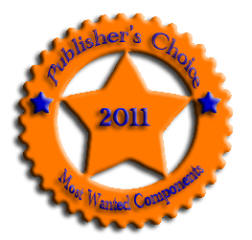
Comparisons
I think the very tunable Ziplex Resonators, at $2800 (reviewed here) – for a complete set of 13, are a hands-down winner regarding their bang-for-the-buck effectiveness. The very products that started it all are the Acoustic System Resonators from France. They remain the most exotic in terms of the types of metals employed. And as a result, they are more versatile in shaping tones and sounds to one’s particular taste or desire. Unfortunately, as precious metals like gold and platinum continue to rise on the Stock Exchange, so does the price of this product. A single Acoustic System Platinum resonator retails for about $2k alone. Ouch!
That said, I believe adding a single PMR does as much to enhance the sound of a listening room as an entire arsenal of Ziplex or Acoustic System resonators. No, you can’t modify or turn a PMR’s effect or “volume” up or down like perhaps the smaller Acoustic System types (for example, by removing or replacing a Gold for a Silver). No, the PMR isn’t cheap ($2190.00). Nor is it as versatile in “color” as the Acoustic System (not even the Ziplex can match the Acoustic System in that regard). However, the utter effectiveness of a single PMR is so positive and so profound that I never observed or noticed a change in “color.” Only in the performance.
In Closing: Taking the show on the road
A Smooth Ride on the Tweak Highway contributors Dan Secula and Ron Cook are friends, music lovers, and neighbors in Northern NJ. I thought their experiences via the PMR would be a most appropriate next column (which follows at the end of this review below), especially after their first write-up on the Stein Harmonizers last spring (here).
I hear it said over and over again that the Bybee Bullets, Acoustic Resonators, Stein Harmonizers, and Lessloss Blackbodies are mere “tweaks.” If a tweak is a term of endearment used to indicate a piece of passive hi-end gear, then cool. But if it has anything to do with the degree to which it can effectively enhance sound, these so-called tweaks should also be considered “components” too.
The PRM is handily my pick for 2011 Most Wanted Component: Publishers’ Choice! The PMR does something that is singular and wonderfully complementary to my system. I cannot recommend it more highly.
![]()

clement perry
Second Opinions:

Second Opinions:
 Let me start by saying that writing a review on a product like this can be somewhat frustrating. On the one hand, it’s always fun to share my views and enthusiasm, especially when something as exciting as the PMR creates that “gotta hear another song” sense of euphoria. On the other hand, much of what I am about to say may fall on deaf ears simply because there are some audiophiles (too many, I think) whose minds are already made up that “tweaks” cannot be taken seriously when it comes to making significant improvements in hi-end audio systems. In view of such audiophiles, real improvements can only be made by new, improved, and often expensive “hardware,” i.e., new speakers, amps, preamps, cables, etc. Tweaks? For them, they are relegated to second-class status, or sometimes dismissed altogether. To those audiophiles, especially concerning this amazing product called the Passive Multi-voice Resonator (PMR), all I can offer are my sincerest and deepest apologies. For this is not merely some tweak, as Clement stated in his closing comments.
Let me start by saying that writing a review on a product like this can be somewhat frustrating. On the one hand, it’s always fun to share my views and enthusiasm, especially when something as exciting as the PMR creates that “gotta hear another song” sense of euphoria. On the other hand, much of what I am about to say may fall on deaf ears simply because there are some audiophiles (too many, I think) whose minds are already made up that “tweaks” cannot be taken seriously when it comes to making significant improvements in hi-end audio systems. In view of such audiophiles, real improvements can only be made by new, improved, and often expensive “hardware,” i.e., new speakers, amps, preamps, cables, etc. Tweaks? For them, they are relegated to second-class status, or sometimes dismissed altogether. To those audiophiles, especially concerning this amazing product called the Passive Multi-voice Resonator (PMR), all I can offer are my sincerest and deepest apologies. For this is not merely some tweak, as Clement stated in his closing comments.
Physically, forgetting the intended purpose of the PMR momentarily, it’s a pretty cool-looking piece of metal. A kind of modern art looking sculpture in roughly the shape of a pan or bowl. Sitting on its stand, it is quite striking in appearance. However, when I placed the PMR into my system and turned on the music, that’s where all the amazement began. And what, exactly, happened, you ask? Well, EVERYTHING! To be more specific, the soundstage opens up with an increased sense of palpability and air. Simultaneously, images become more focused and solidified – the “thereness” illusion is much more enhanced. But the best part, at least in my system, was that instruments and voices sounded more believably life-like! It seems that the individual instruments’ actual harmonic structure is somehow enhanced to sound more truthful. A good analogy would be varying the color intensity on your TV monitor. Decreasing the color level gives images an opaque and colorless, bleached-out look. The images move away from bleached-out and back to color as you readjust. Until I heard the PMR in my system, I would have sworn my system was harmonically spot-on like most of us. The addition of the PMR has since given me a truer indication that my system was a little “bleached out” in terms of its color saturation. And as a result, the PMR does to instruments and voices what adjusting the “color” on a TV does. Harmonics are more correct, making the music sound more natural and more like the real thing. The overall results of these improvements are a much more engaging and pleasurable listening experience.
In the final analysis, I simply enjoy the music more!
Checking out the manufacturers’ claims on their website, I must concur that the PMR is one of those all-too-rare products that does exactly as claimed! Suffice it to say, the improvements are NOT subtle and are easily discerned by even the most casual listener. Indeed, I have done A/B comparisons with a number of people, and on each (separate) occasion, the effect of removing the PMR was obvious: folks cannot believe it. The bottom line is that once you try a PMR on your system, you will be hard-pressed to listen without it. Highly recommended.

![]()
Second Opinions: My Experience with the High-End Novum PMR Premium
 When I first saw and held the PMR Premium, I was taken by the physical beauty of it as a work of art. Many guests at my home immediately noticed and admired the precisely turned, special bronze alloy sculpture sitting on my fireplace hearth.
When I first saw and held the PMR Premium, I was taken by the physical beauty of it as a work of art. Many guests at my home immediately noticed and admired the precisely turned, special bronze alloy sculpture sitting on my fireplace hearth.
The PMR can be placed almost anywhere in the listening room. I tried a variety of placements with my PMR and finally settled at a position on my fireplace hearth floor, directly in front of my listening chair’s “sweet spot.”
First Time Listening
I was curious and excited about what I was about to hear with the PMR in my system. I put on a series of well-recorded, familiar music, sat back, hit the play button, and began to listen. What struck me first was that I could detect a change in the presentation, which was far from subtle. I listened to a five-piece Dixieland jazz band, and each instrument sounded more authentic, like in real life. There was a patina of sweetness over the sound. The harmonics of each instrument seemed to have gained more of a presence, yet remained easy and never pushy or in your face. The naturalness of the PMR’s introduction proved intoxicating. I asked myself, how could a beautiful circular and bronze alloy object, that reminds me of a gong resting on three short bronze legs, transform an already excellent sound to a higher level? The PMR had me reaching for my most coveted discs deep into the late night.
I invited two of my audiophile friends over a few days later to get their take on the PMR. I made sure I didn’t talk about it before we sat down to play their discs. The first time we listened to a few select tracks of their choosing, it was without the PMR in the room. I then retrieved the PMR and placed it in position. I repeated the tracks as they continued listening. One of my buddies soon remarked about the “sweetness of the sound.” “Vivid” and “pristine” came from my other friend. I then asked, “To what degree do you hear a change?” Both offered a resounding “significant!”
It’s always nice to have others, whose opinion I respect, weigh in on what I have been hearing and compare it with my impressions. After removing and replacing the piece several times during the listening session, it was unanimous that the PMR added a significant quality to our listening experience.
I decided to give the PMR a rest, so I removed it from my system for two weeks. I then listened on a nearly daily basis to my now PMR-less system. At first, I felt there was something I had missed, but I must admit, as time passed, I grew used to the fine sound I had with my original system intact.
My substantial rig consists primarily of a Behold BPA768 preamp and amplifier, Dynaudio Evidence Temptation loudspeakers, and the Nova Physics Memory Player serving as the primary source material.
The sound of the PMR draws you closer to the performance rather than to the electronics. The time finally came to place the unit back in its original location on my fireplace hearth, dead center, at the sweet spot. I began listening to many of the same tracks I had over the last two weeks without the unit in place. It became immediately evident to me during the first five minutes that even though my system was running on all cylinders during that time, the experience I was now having was significantly higher on the musical adjective scale. As much as I enjoyed my system without the PMR, I know now what this device can do to help my system sound even better, and I hereby choose not to be without a PMR. In simple terms, the PMR just makes everything sweeter-sounding and more organic in a very natural way without any noticeable downside.
With the PMR Premium, we have a significant, expensive, beautiful tweak that I feel will improve the enjoyment of your music collection. My decision to audition for the PMR made me feel wonderful, considering I had no idea what the results would be. Highly recommended.

![]()
High End Novum Resonator: Price: $2190.00 USA
US/Canada Distributor: Highend-electronics, Inc.
Importer of fine European Hi-Fi
~~~~~~~~~~~~~~~~~~~~~~~~~~
Address: Apple Valley, California, USA
Phone: +1 (760) 490 2410
Web: www.highend-electronics.com
Email: Office@highend-electronics.com
![]()
Don’t forget to bookmark us! (CTRL-SHFT-D)
Stereo Times Masthead
Publisher/Founder
Clement Perry
Editor
Dave Thomas
Senior Editors
Frank Alles, Mike Girardi, Russell Lichter, Terry London, Moreno Mitchell, Paul Szabady, Bill Wells, Mike Wright, and Stephen Yan,
Current Contributors
David Abramson, Tim Barrall, Dave Allison, Ron Cook, Lewis Dardick, John Hoffman, Dan Secula, Don Shaulis, Greg Simmons, Eric Teh, Greg Voth, Richard Willie, Ed Van Winkle, Rob Dockery, Richard Doran, and Daveed Turek
Site Management Clement Perry
Ad Designer: Martin Perry







Be the first to comment on: The High End Novum PMR Premium Resonator